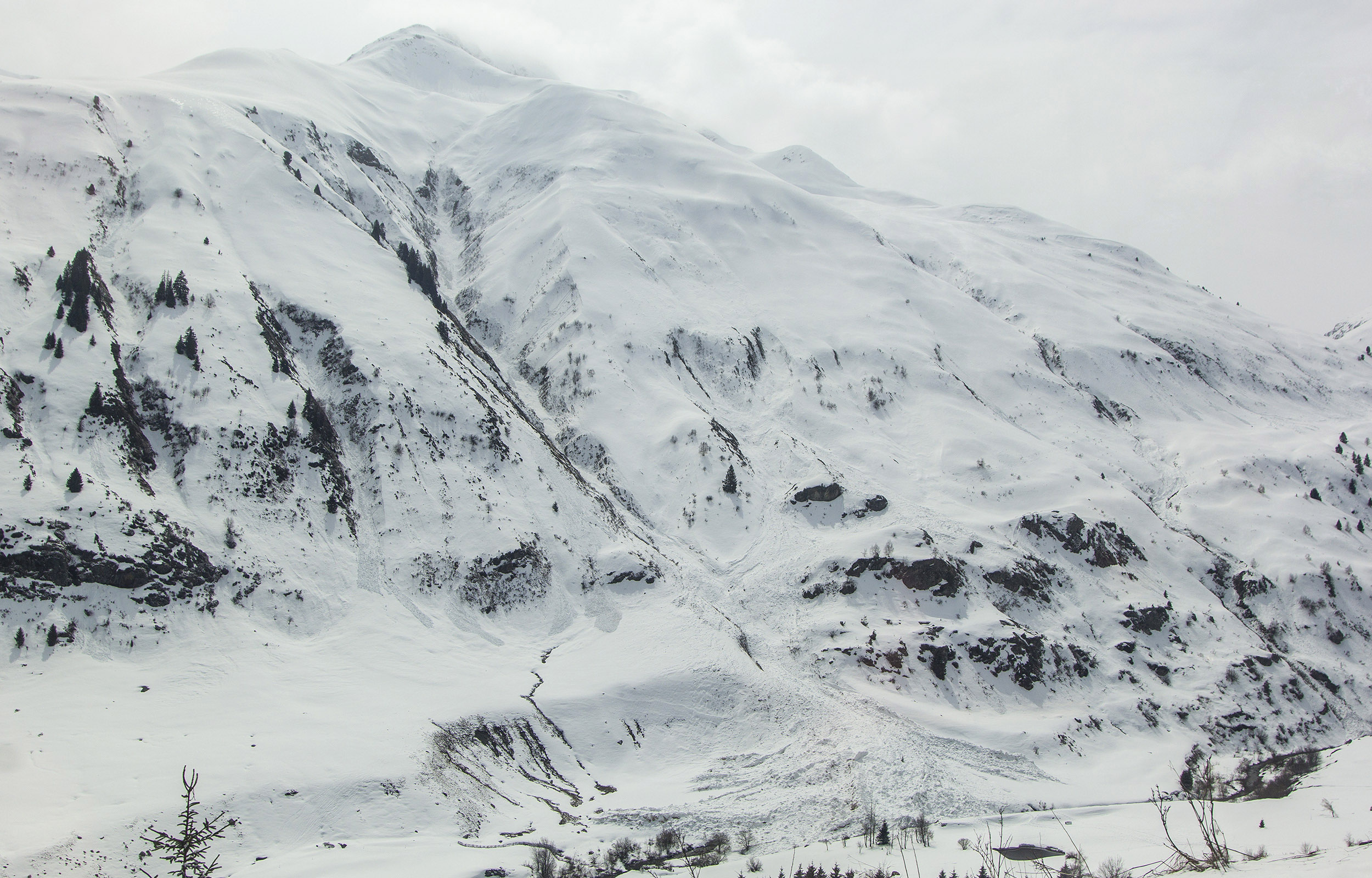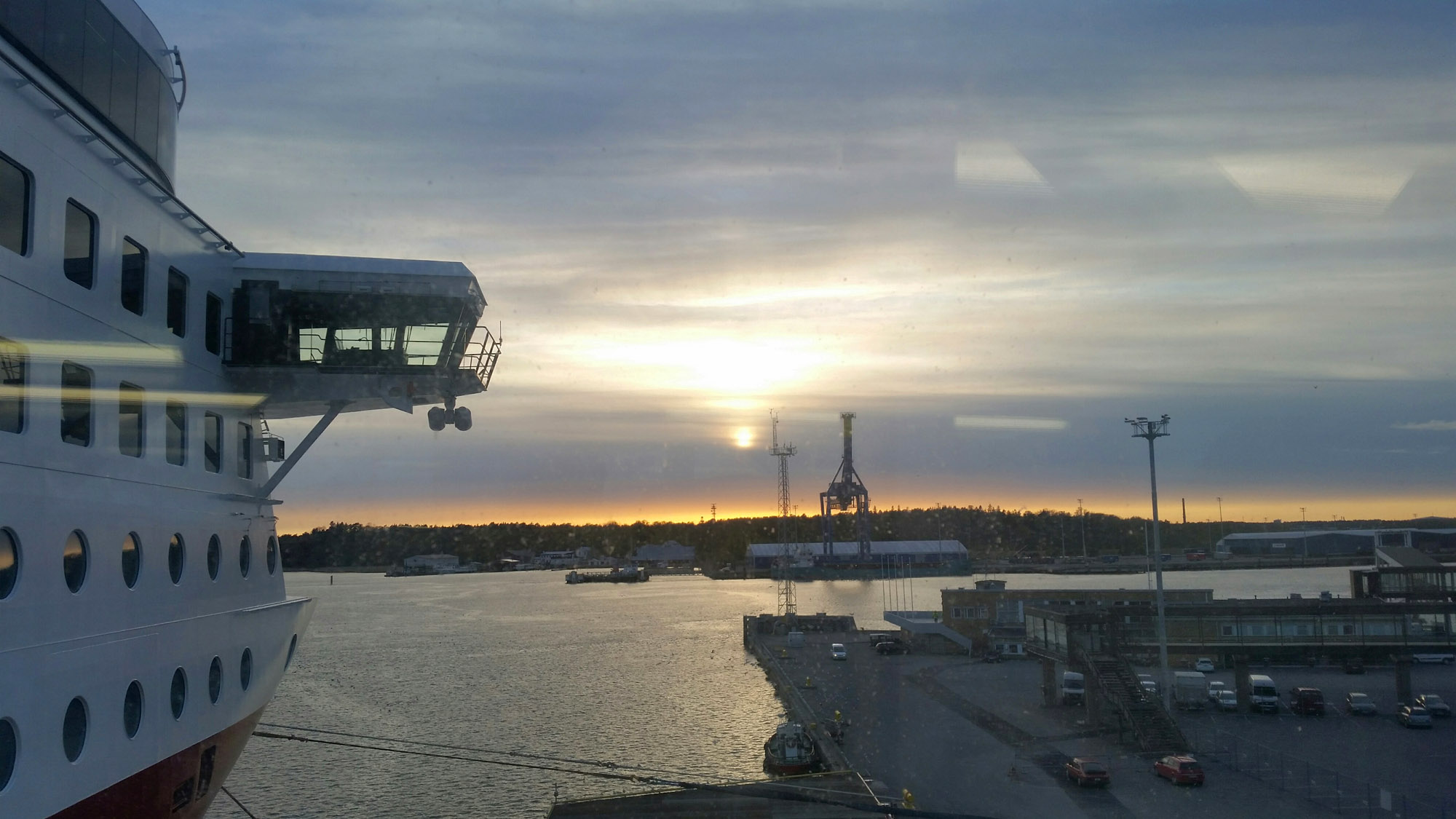9 May 2019
News
Slow travel from Helsinki to Venice

The Alps seen from the Zermatt-St Moritz-Tirano train. Photo by Janne Nabb.
How to get from Helsinki to Venice without flying? Here are some practical tips and reflections on the topic of slow travel.
WHY TRAVEL SLOW?
It’s perhaps obvious that a key reason for slow travel is to reduce the CO2 emissions and pollution that the travel causes. Furthermore, a decision to prioritise slow travel can also be helpful in pushing an organisation to make a big paradigm shift in its goals and operations.
In addition to being slow, traveling by sea / land can also be more expensive and does require more planning. These aspects contradict with the basic logic of small non-profit cultural organisations like HIAP, who often try to realise ambitious plans with shoestring budgets and resources. The agenda of pushing for ever more grand scale plans needs to be replaced with the agenda of doing less but in a more well considered manner.
One can also change the perspective, and see slow travel as an opportunity to achieve more. When traveling slow the journey itself can become a meaningful experience, rather than a blank moment between location A and B. HIAP and our collaborators are currently making plans for programmes that would more fully utilise the train journey (especially on long journeys, such as the Trans-Siberian train). Slow travel can also be very enjoyable! The trip from Helsinki to Venice featured amazing views when traveling through the Alps, and time in the train can be spent on reading, writing and relaxing.
It should also be emphasised institutions are in the current situation in much better position to enable slow travel than individual persons. For many people the idea of slow travel seems like a luxury that they cannot afford, due to lack of time and money. The institutions have the power to change this – they can decide to invest money and time so that people can travel slow. Non-profit cultural organisations such as HIAP have the potential to be in the forefront of this change, since we have a lot of freedom in setting our goals and agenda.
THE EMISSIONS
From Helsinki to Venice the emissions with sea / land travel are approx 1/4 in comparison to flight travel, if one chooses the travel connections that produce low emissions. Finding out what these are is not entirely straightforward.
The most popular slow travel connection from Helsinki to Europe is via Turku-Stockholm-Copenhagen-Hamburg. On this route, the ferry connection between Turku and Stockholm produced a large share of all the emissions. What most calculators don’t take into account is that recently new ships with significantly lower emissions started to operate between Turku and Stockholm, as well as between Helsinki and Tallinn. The new ferries that run with liquified natural gas produce approximately 98 g of CO2 per person per kilometre, in comparison to 143-456 of CO2 per person per kilometre for regular boats (these figures are from Lipasto database by VTT Technical Research Centre of Finland). The low emissions boat that operates between Turku and Stockholm is Viking Grace.
Furthermore, many emissions calculators give misleading (far too low) figures for flight emissions, especially the airline companies are keen to present low figures for their flights. The emissions from jet planes in high altitudes have a larger environmental impact and thus according to the researchers the emissions should be approximately doubled to get the right figures.
Based on calculator ecopassenger.hafas.de, the CO2 emissions for a Helsinki-Venice return flight are 171 kg if one uses the default settings. The small print on the site says that “This does not cover the whole global warming impact of the flight. To consider it totally, select “CO2-emissions with climate factor” in the settings.”. If one changes this setting, then the CO2 emissions jump to 384 kg. Even this figure is low in comparison with the figure that atmosfair.de site gives for the same flight (448-505 kg, depending on the airplane type).
In comparison the figure for sea / land travel is 278 kg, but if one takes a closer look one can see that most of the emissions come from the ferry travel. The emissions of a standard ferry ride is approx 200 kg, but if one takes the low emissions LNG powered ferry the emissions are only approx 30 kg.
So, as a summary taking a flight one way produces approx 380-505 kg of CO2 emissions while the trip with ferry + train can be made with just 100 kg of emissions.
If there is no low emission ferry available, does it then make any sense to choose the slow travel over taking a flight? Regarding this question we have been advised by Mustarinda residency (our collaborator in Post-Fossil Transition project) and other experts on the topic that taking the ferry is still a better choice than flying, since with sea travel there are much more options for making it a more environmentally sustainable travel solution. Furthermore, most of the big ferries that travel to Finland also carry cargo and the need for this sea cargo traffic is more likely to remain in future as well.

Taking the ferry from Turku. Photo by Juha Huuskonen.
THE ROUTE AND THE TICKETS
The site Rome2Rio is useful for exploring various travel routes. As mentioned earlier, a popular route from Finland is via Turku-Stockholm-Copenhagen-Hamburg, from there one can continue further to Venice via Munich or Vienna. One can of course make a longer, more meandering journey and stop in for example Berlin on the way. Another interesting route would be via Baltics, Tallinn-Kaunas-Warsav-Vienna-Venice. Unfortunately the connection between Kaunas and Warsaw is only available during weekends, due to the construction on the new Baltic Rail connection. The good news is that in a few year’s time the connection via Baltic states further to Central Europe is going to be much easier and quicker.
About the costs –
An interrail ticket with 5 travel days within a month costs 282 € for adults, thus the cost of one day of travel with this ticket is 56 €. On top of this one has to add seat reservations which are usually pretty cheap, 5-10 € per journey. On the other hand, if one books train tickets early enough then these can be cheaper than the interrail option.
Booking the tickets can be surprisingly tricky and time-consuming operation in comparison with booking a flight with just a few clicks. One needs to use the sites of various national railway companies to make the bookings, and in many cases it is necessary to install a mobile app of such a company to make the booking. In general buying tickets is pretty straightforward, but just reserving a seat (when one has an interrail ticket) might require a bit research. The site seat61 has useful advice for many situations, and luckily various support communities for slow travel have popped up (in Finland the FB group Maata pitkin matkustavat is currently very active). It’s of course possible to use a travel agent as well, there are some that are specialized in land / sea travel.
THANKS & GREETINGS
Thanks to Janne Nabb for the photos and greetings to our fellow slow travellers to Venice: Arttu Merimaa & Miina Hujala (see their travel blog at https://unmarked.home.blog), nabbteeri, Saara Hannula & many others!
In near future we will add more information about slow travel to our site, since our aim is that a bigger portion of our residents would travel in future via sea / land as well.
During 2018-2020 HIAP & Mustarinda collaborate together in context of Post-Fossil Transition project which is enabled by funding from Kone Foundation.
